Abstract
We investigated the use of social skills groups to facilitate increased social interactions for students with autism and their nonhandicapped peers in an integrated first-grade classroom. Social skills groups consisted of training students and peers in initiating, responding, and keeping interactions going; greeting others and conversing on a variety of topics; giving and accepting compliments; taking turns and sharing; asking for help and helping others; and including others in activities. Training occurred during the first 10 min of 20-min play groups, four times per week. Using a multiple baseline across subjects design, results demonstrated increases in the frequency of, time engaged in, and duration of social interactions, as well as the responsivity of students and peers to each other. Results were maintained when students were monitored and given feedback on social performance in play groups and during follow-up.
Full text
PDF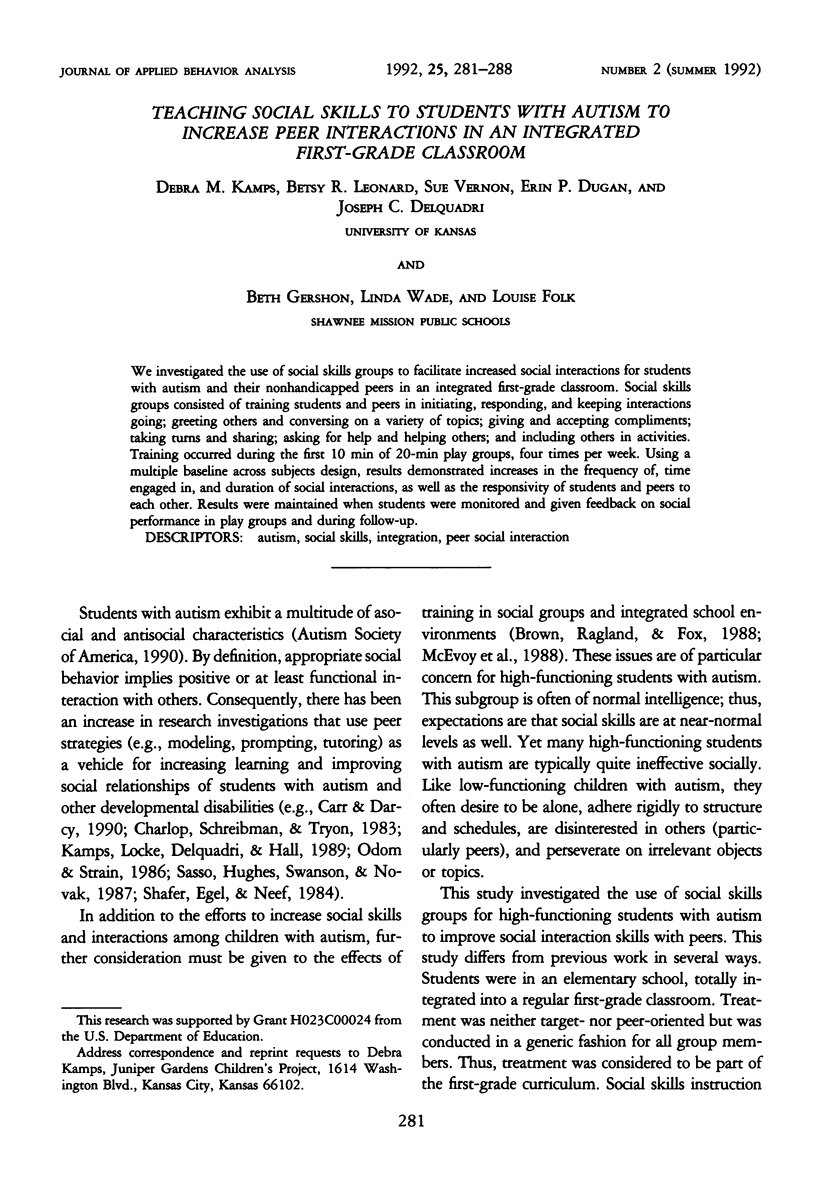
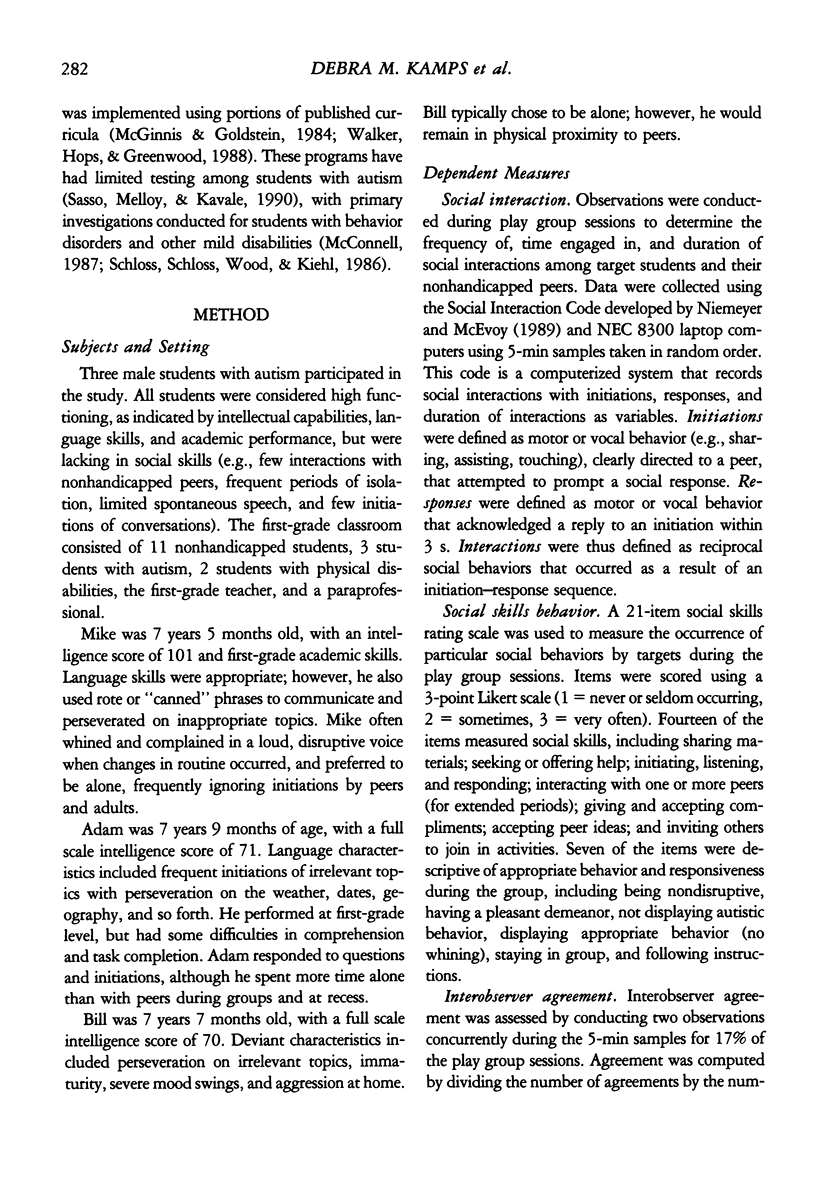

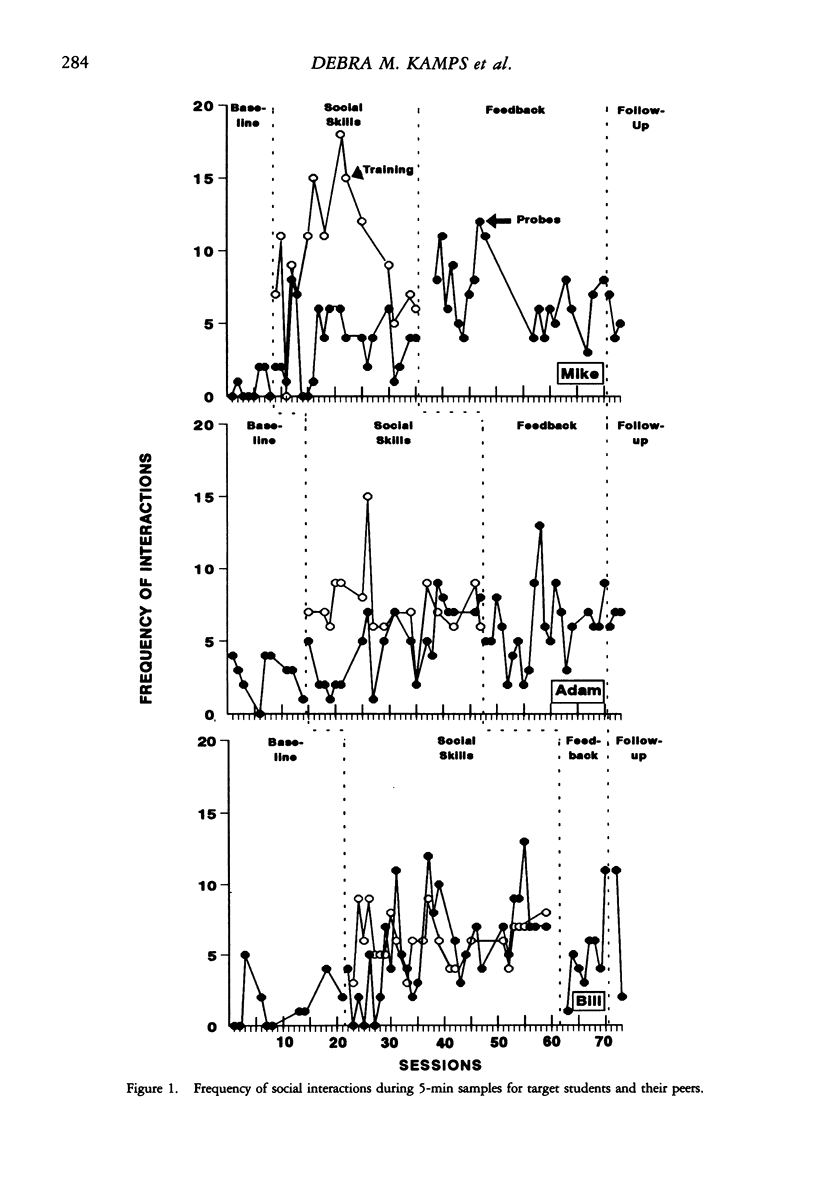
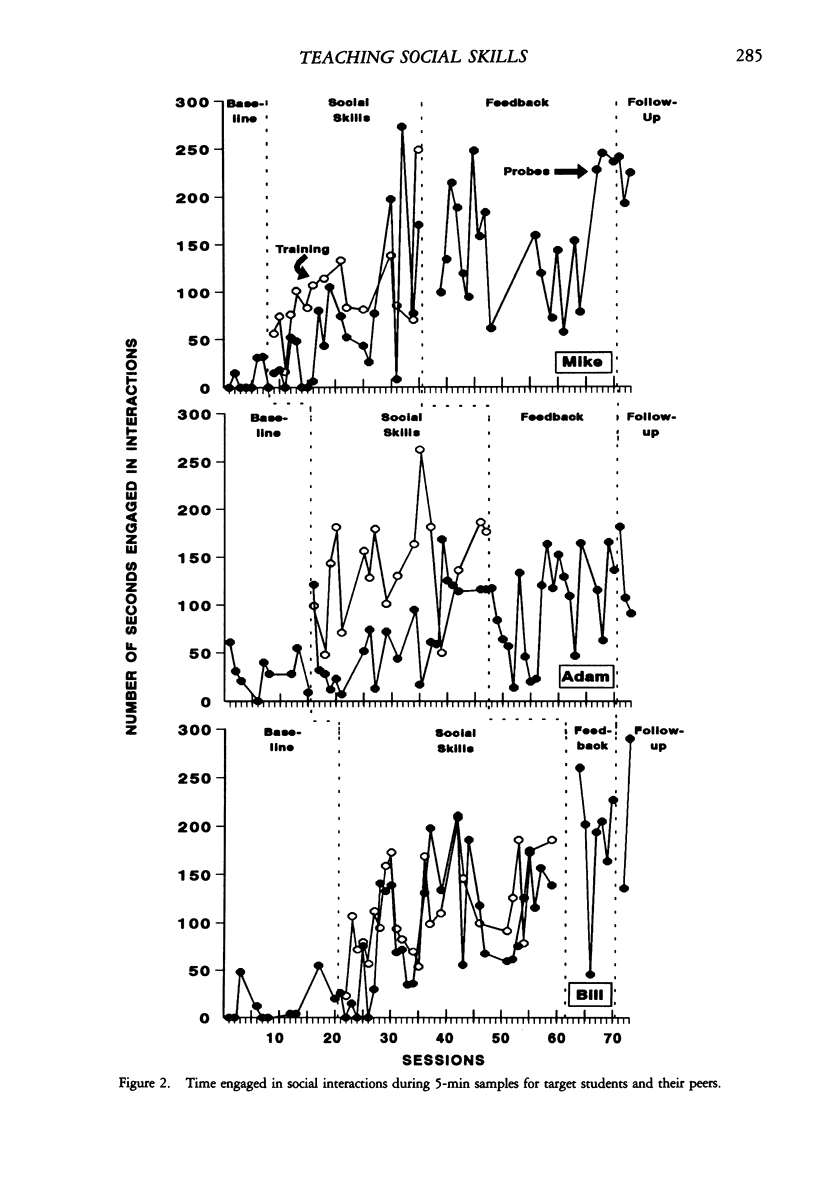
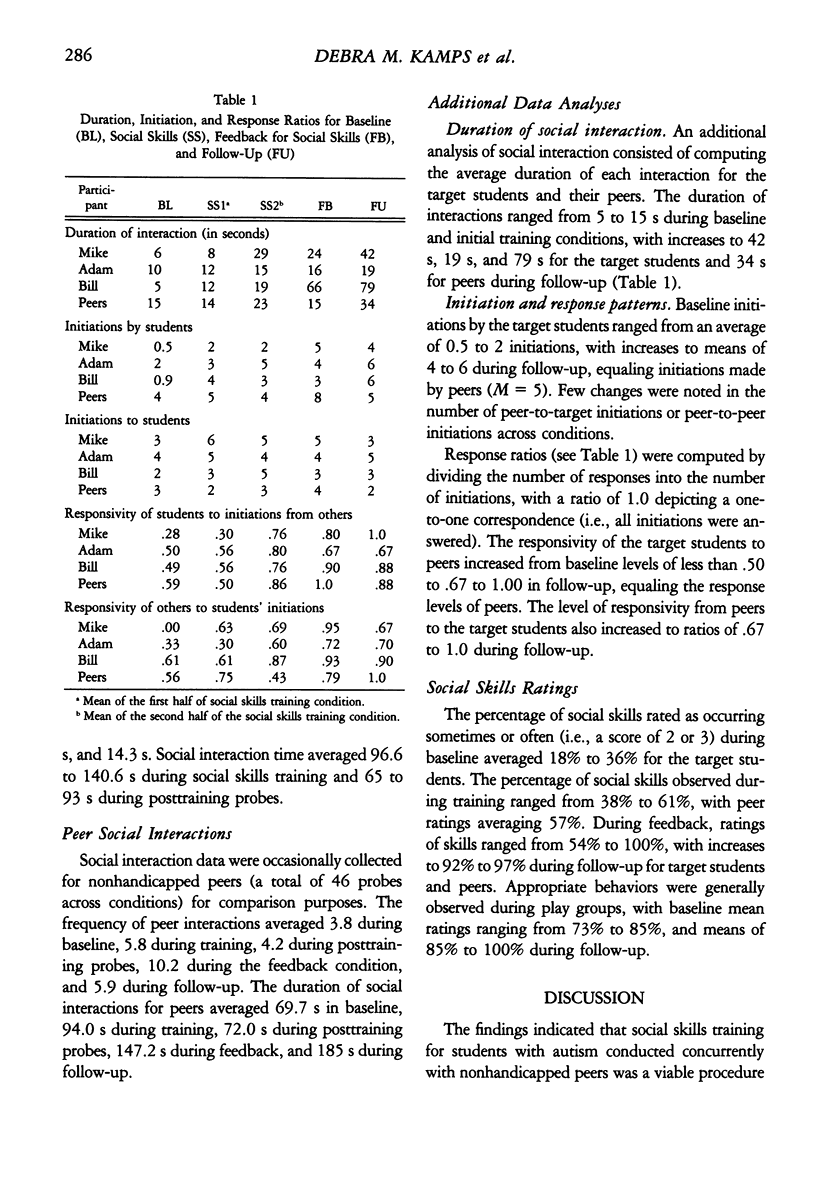
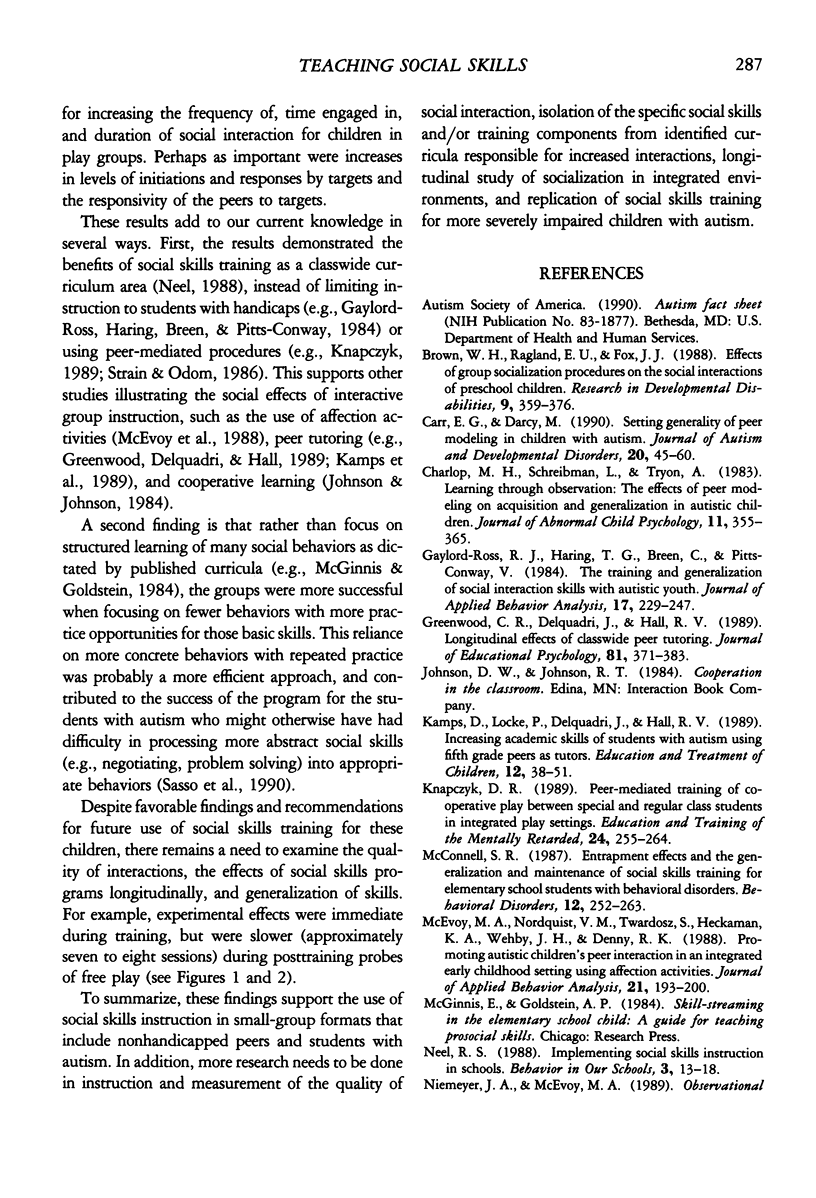

Selected References
These references are in PubMed. This may not be the complete list of references from this article.
- Brown W. H., Ragland E. U., Fox J. J. Effects of group socialization procedures on the social interactions of preschool children. Res Dev Disabil. 1988;9(4):359–376. doi: 10.1016/0891-4222(88)90031-5. [DOI] [PubMed] [Google Scholar]
- Carr E. G., Darcy M. Setting generality of peer modeling in children with autism. J Autism Dev Disord. 1990 Mar;20(1):45–59. doi: 10.1007/BF02206856. [DOI] [PubMed] [Google Scholar]
- Charlop M. H., Schreibman L., Tryon A. S. Learning through observation: the effects of peer modeling on acquisition and generalization in autistic children. J Abnorm Child Psychol. 1983 Sep;11(3):355–366. doi: 10.1007/BF00914244. [DOI] [PubMed] [Google Scholar]
- Gaylord-Ross R. J., Haring T. G., Breen C., Pitts-Conway V. The training and generalization of social interaction skills with autistic youth. J Appl Behav Anal. 1984 Summer;17(2):229–247. doi: 10.1901/jaba.1984.17-229. [DOI] [PMC free article] [PubMed] [Google Scholar]
- McEvoy M. A., Nordquist V. M., Twardosz S., Heckaman K. A., Wehby J. H., Denny R. K. Promoting autistic children's peer interaction in an integrated early childhood setting using affection activities. J Appl Behav Anal. 1988 Summer;21(2):193–200. doi: 10.1901/jaba.1988.21-193. [DOI] [PMC free article] [PubMed] [Google Scholar]
- Odom S. L., Strain P. S. A comparison of peer-initiation and teacher-antecedent interventions for promoting reciprocal social interaction of autistic preschoolers. J Appl Behav Anal. 1986 Spring;19(1):59–71. doi: 10.1901/jaba.1986.19-59. [DOI] [PMC free article] [PubMed] [Google Scholar]
- Shafer M. S., Egel A. L., Neef N. A. Training mildly handicapped peers to facilitate changes in the social interaction skills of autistic children. J Appl Behav Anal. 1984 Winter;17(4):461–476. doi: 10.1901/jaba.1984.17-461. [DOI] [PMC free article] [PubMed] [Google Scholar]
- Strain P. S., Odom S. L. Peer social initiations: effective intervention for social skills development of exceptional children. Except Child. 1986 Apr;52(6):543–551. doi: 10.1177/001440298605200607. [DOI] [PubMed] [Google Scholar]


